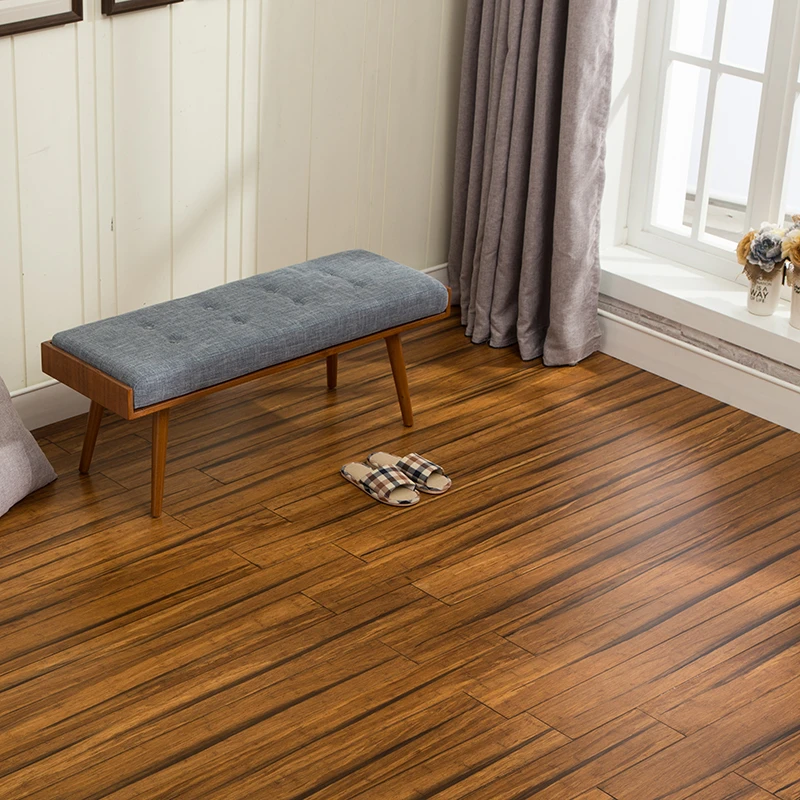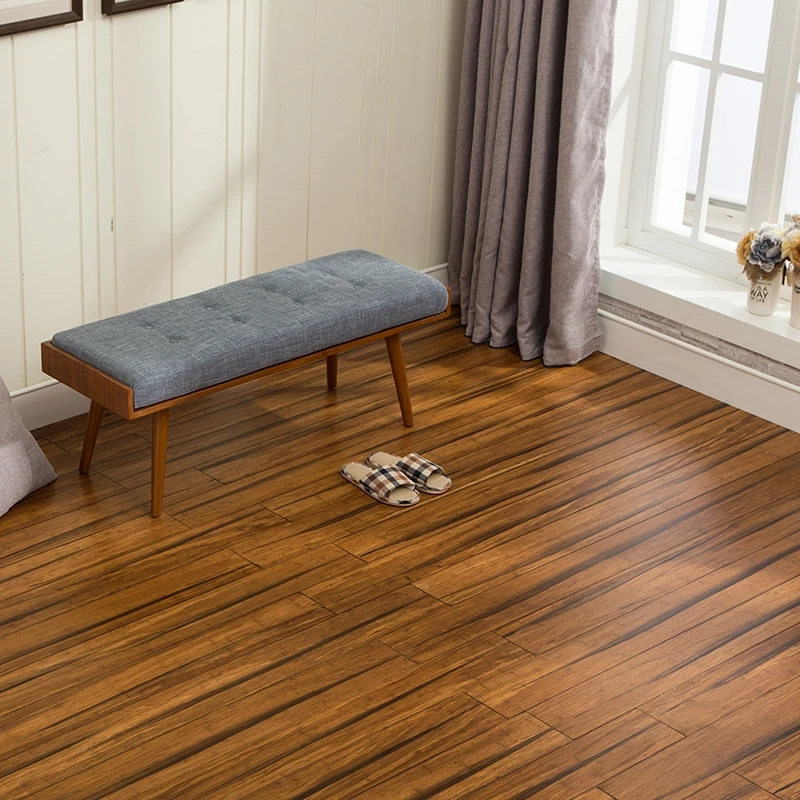
Bamboo flooring has rapidly gained traction among homeowners and designers seeking sustainable, stylish, and durable flooring solutions. With its natural beauty and variety, bamboo flooring can effectively enhance any interior decor. However, with numerous types available, selecting the right bamboo flooring can be a daunting task. This blog provides a comprehensive overview of bamboo flooring types, helping you choose the right texture and look for your space.
Understanding Bamboo Flooring
Bamboo is a grass known for its tensile strength, making it a highly durable flooring option. It grows quickly, making bamboo a renewable resource. Bamboo flooring typically comes in three primary forms: solid bamboo, engineered bamboo, and strand woven bamboo. Each type has unique characteristics that influence its appearance, texture, and performance.
Types of Bamboo Flooring
1. Solid Bamboo Flooring
Description: Solid bamboo flooring is made from solid strips of bamboo that are glued together. This type offers a natural aesthetic, showcasing the distinctive grain of the bamboo.
Texture & Appearance: The surface can be finished in various ways, including matte, semi-gloss, and high-gloss. The natural color ranges from light blonde to caramel, often featuring unique grain patterns.
Durability: Solid bamboo flooring is sturdy but is best suited for environments with controlled humidity. Extreme moisture can lead to warping or shrinking.
Installation: Solid bamboo can be nailed down or glued, but it is not recommended for below-grade installations due to its susceptibility to moisture.
Best Uses: Ideal for residential settings, such as living rooms, dining areas, and bedrooms, where humidity levels are stable.
2. Engineered Bamboo Flooring
Description: Engineered bamboo flooring consists of a bamboo veneer glued to a plywood or fiberboard core. This construction enhances stability and moisture resistance.
Texture & Appearance: Like solid bamboo, engineered bamboo features a beautiful surface with various finishes available. It can mimic the look of solid bamboo while providing additional design flexibility.
Durability: Engineered bamboo is more stable than solid bamboo, making it better suited for areas with fluctuating humidity levels, such as basements or kitchens.
Installation: This type can be glued down, nailed down, or installed as a floating floor, making it ideal for DIY projects.
Best Uses: Suitable for both residential and commercial applications, engineered bamboo can be used in diverse settings, including offices, retail spaces, and homes with varying climate conditions.
3. Strand Woven Bamboo Flooring
Description: Strand woven bamboo is produced by compressing strands of bamboo fibers under extreme pressure. This innovative process results in an incredibly dense and durable flooring product.
Texture & Appearance: Strand woven bamboo has a unique, linear grain and generally exhibits a richer, darker color than solid and engineered options. The appearance can range from natural to carbonized, showcasing a beautiful blend of textures.
Durability: Known for its remarkable hardness, strand woven bamboo typically scores between 3,500 and 4,000 PSI on the Janka scale. This makes it exceptionally resilient to wear, scratches, and dents.
Installation: It can be glued down or installed as a floating floor. Its toughness makes it suitable for high-traffic venues.
Best Uses: Ideal for homes with pets and children, strand woven bamboo is also a preferred choice for commercial spaces due to its high durability.
Textural Considerations
When selecting bamboo flooring, considering texture will significantly influence the look and feel of your space. Here’s a closer look at the available textures:
Smooth Finish
Description: A smooth finish presents a contemporary and sleek appearance. It highlights the natural beauty of bamboo while offering an elegant touch.
Best For: Modern and minimalist interiors where simplicity and cleanliness are prioritized.
Hand-Scraped Finish
Description: Hand-scraped bamboo flooring features subtle grooves and indentations created by hand, offering a rustic, textured look. This finish enhances the floor’s character and adds depth.
Best For: Cozy, rustic settings and traditional interiors where warmth and charm are desired.
Distressed Finish
Description: Distressed bamboo flooring has a weathered appearance, with intentional markings and imperfections. This style lends a vintage feel to the space.
Best For: Homes aiming for a farmhouse aesthetic or eclectic designs, where age and history are emphasized.
Brushed Finish
Description: Brushed bamboo undergoes a process that highlights the natural grain patterns, creating a textured surface that feels more natural underfoot.
Best For: Spaces that prioritize earthy aesthetics, offering a blend of modern and traditional elements.
Color Variations
Bamboo flooring is available in a range of colors, from natural light tones to rich, dark hues. Here are some choices to consider:
Natural Bamboo
Description: Natural bamboo showcases the original light tones of the grass, offering a bright and airy feel.
Best For: Contemporary and Scandinavian interiors, where light and space are paramount.
Carbonized Bamboo
Description: Carbonized bamboo is created through a heating process that darkens the bamboo, resulting in deeper brown shades. This finish adds warmth and richness to the flooring.
Best For: Spaces looking for a more luxurious, cozy ambiance, such as living rooms or bedrooms.
Stained Bamboo
Description: Stained bamboo allows for customization, with a wide range of colors available. Retailers often offer different stain options to match specific design schemes.
Best For: Tailored designs and projects where matching flooring to existing decor is essential.
Environmental Considerations
Bamboo is renowned for its ecological benefits. As a renewable resource that grows rapidly, it stands as a sustainable alternative to traditional hardwoods. When choosing bamboo flooring, consider sourcing from manufacturers that adhere to sustainable practices, verified through certifications such as the Forest Stewardship Council (FSC).
Installation Methods
Understanding the available installation methods is crucial for a successful bamboo flooring project. Each method has its advantages and may influence the overall cost and effort involved:
Nail Down
This method is suitable for solid bamboo flooring and provides a secure and stable installation. It is best completed by professionals, ensuring the floor remains intact and free from movement.
Glue Down
Applicable for both solid and engineered bamboo, glue-down installation allows for direct adhesion to the subfloor. This method provides stability and is often favored in humid areas.
Floating Installation
Typically used for engineered and strand woven bamboo, floating floors snap together without glue or nails, allowing for easier installation. This method is ideal for DIY projects and can be laid over various types of existing flooring.
Conclusion
Choosing the right type of bamboo flooring involves considering various factors, including the specific look, texture, and durability required for your space. With options like solid, engineered, and strand woven bamboo each offering unique benefits, retailers and homeowners can confidently select a flooring solution that meets their aesthetic and practical needs.
Bamboo flooring not only enhances the beauty of interiors but also supports a more sustainable lifestyle. By understanding the key attributes—such as texture, color variations, and installation methods—buyers can make informed decisions that will lead to a successful flooring outcome, enriching their environments for years to come. Whether you’re aiming for a modern, rustic, or traditional look, bamboo flooring provides the versatility required to create stunning spaces.


